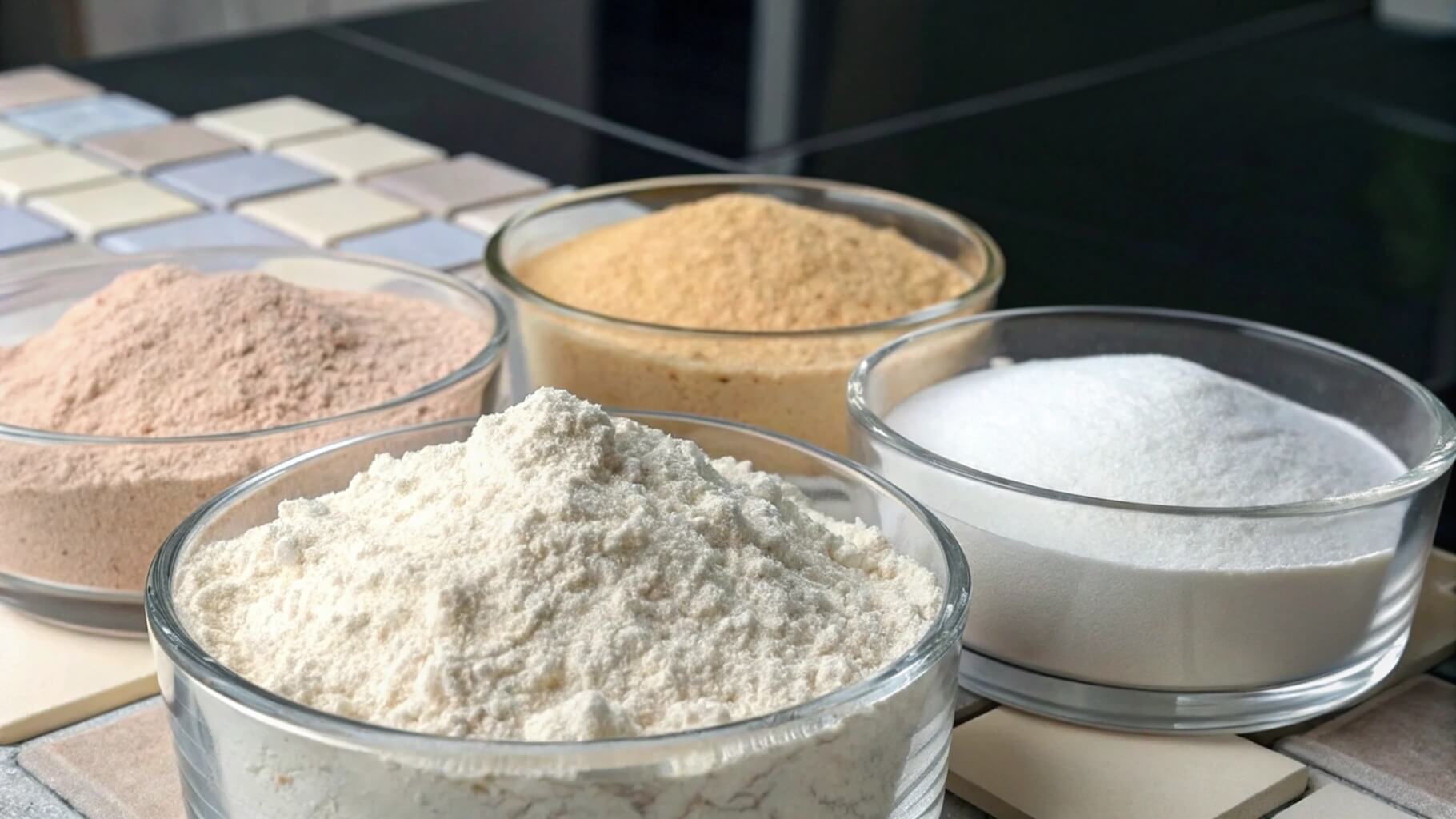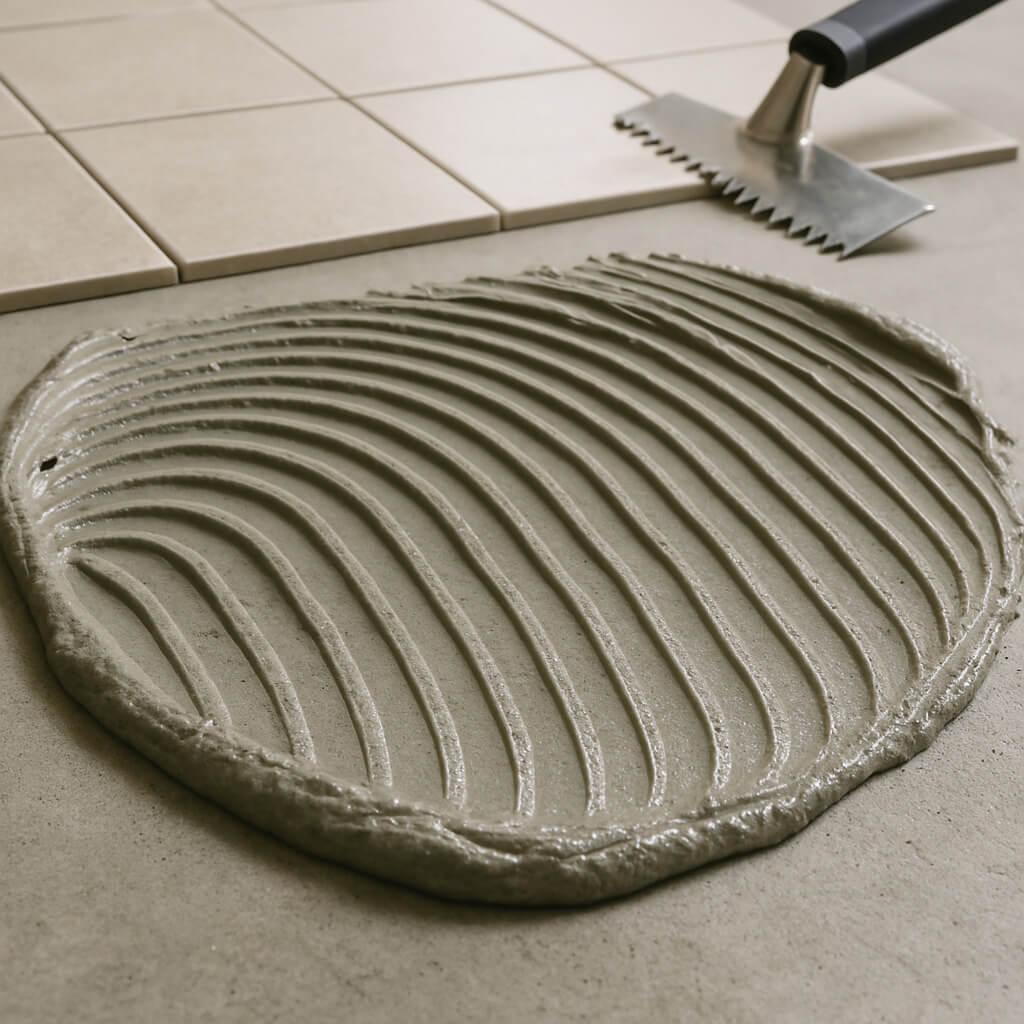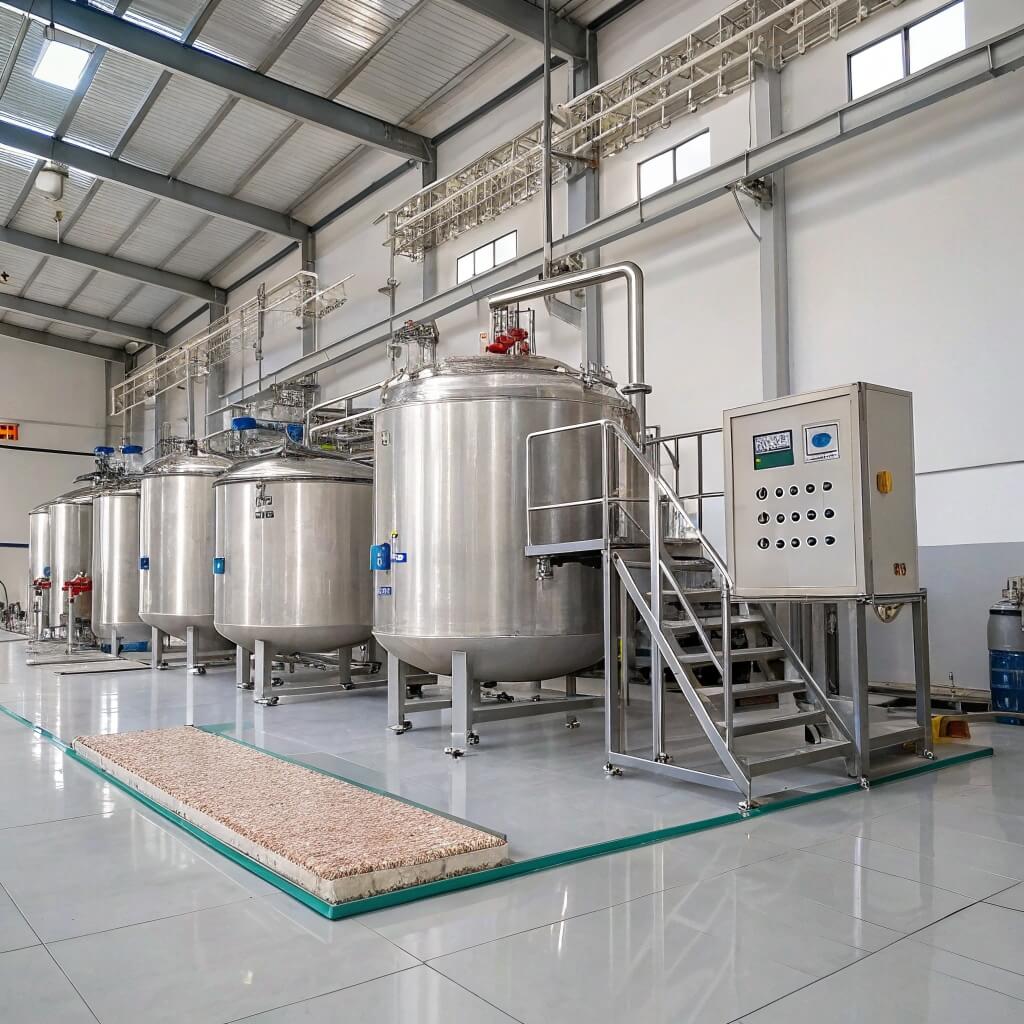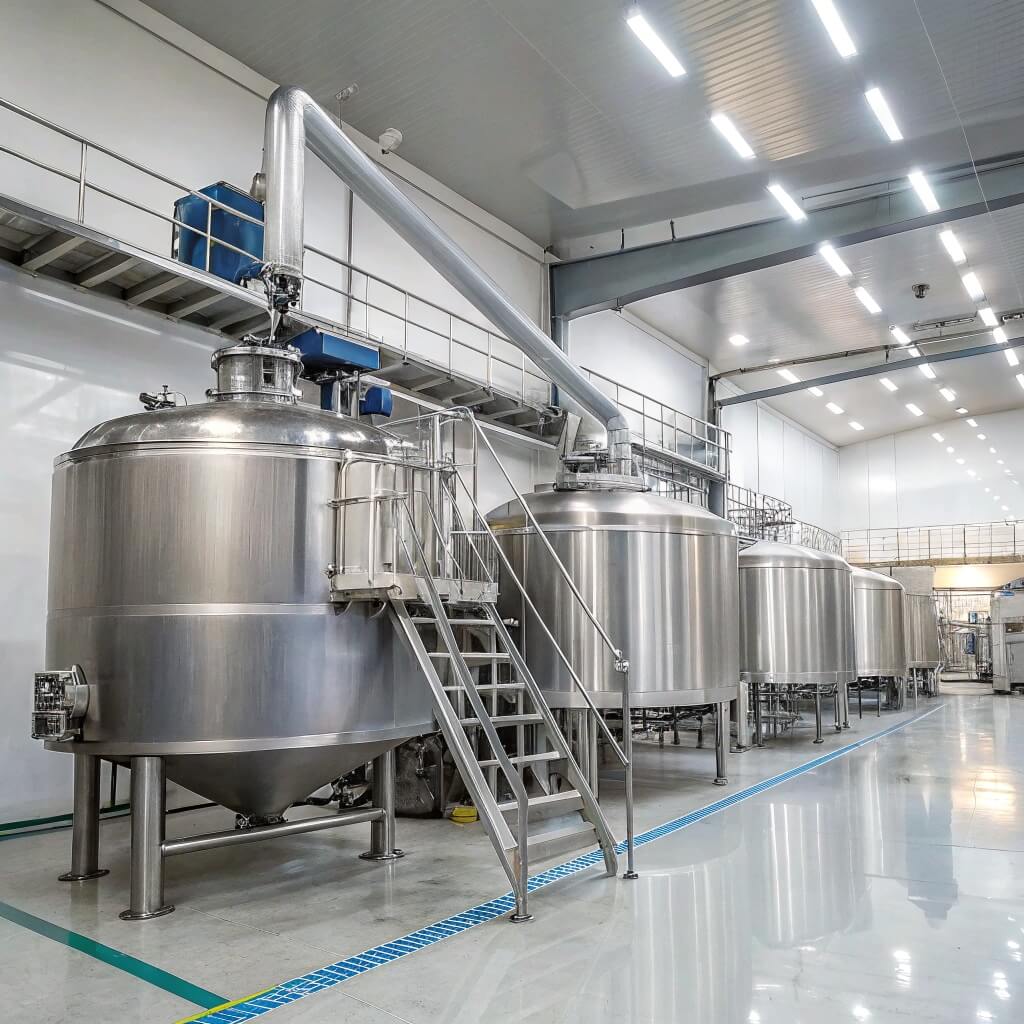Die Auswahl des falschen Hydroxypropylmethylcellulose (HPMC)-Qualität für Fliesenkleber kann zu schlechte Verarbeitbarkeit, schwache Bindung und ungleichmäßige Aushärtung. Unterschiedliche Viskositätsstufen und Formulierungen beeinflussen Haftfestigkeit, Wasserrückhaltevermögen und Rutschfestigkeit, wodurch die Sortenauswahl entscheidend ist. Welche HPMC-Sorte gewährleistet also die beste Leistung?
Die richtige HPMC-Qualität optimiert die Haftung, verbessert die Streichfähigkeit und verlängert die offene Zeit von Fliesenklebern. Die Wahl der richtigen Viskosität und Dosierung gewährleistet stärkere Bindung, verbesserte Verarbeitbarkeit und bessere Langzeitbeständigkeit.

Bildbeschreibung: Verschiedene HPMC-Pulverproben mit unterschiedlichen Viskositätsstufen, die ihre Rolle in Fliesenkleberformulierungen veranschaulichen.
HPMC-Typen variieren in Viskosität, chemische Zusammensetzung und AnwendungsleistungDas Verständnis dieser Unterschiede ist wichtig für Hersteller, Auftragnehmer und Lieferanten Suche hochwertige Fliesenkleber. Lassen Sie uns untersuchen, warum die Auswahl der richtige HPMC-Qualität ist entscheidend für die Leistung.
Warum ist die richtige HPMC-Qualität für Fliesenkleber wichtig?
Die falsche Wahl Hydroxypropylmethylcellulose (HPMC)-Qualität in Fliesenklebern kann zu schlechte Haftung, ungleichmäßige Aushärtung und schwierige Anwendung. Unterschiedliche Viskositätsstufen wirken sich Wasserrückhaltevermögen, Verarbeitbarkeit und Haftfestigkeit, weshalb es wichtig ist, für jede Formulierung die richtige Qualität auszuwählen.
Die richtige HPMC-Qualität sorgt für bessere Haftung, verbesserte Wasserspeicherung und optimale Verarbeitbarkeit. Es beeinflusst direkt die einfache Anwendung, Abbindezeit und Haltbarkeit des Fliesenklebers, was es zu einem entscheidenden Faktor in Hochleistungsformulierungen macht.
Die Rolle von HPMC bei der Leistung von Fliesenklebern
1. Wasserretention und Zementhydratation
HPMC-Kontrollen Feuchtigkeitsabgabe, verhindert vorzeitiges Austrocknen und sorgt für vollständige ZementhydratationDies verbessert Haftfestigkeit und verringert das Risiko einer Fliesenablösung.
- Falsche HPMC-Qualität: Wasser verdunstet zu schnell, was zu schwache Haftung.
- Richtige HPMC-Qualität: Die Feuchtigkeit bleibt länger erhalten und ermöglicht Zement richtig aushärten.
2. Viskositäts- und Verarbeitbarkeitsgleichgewicht
Die Viskosität von HPMC bestimmt die Fließfähigkeit und Streichfähigkeit des Klebstoffs. Höhere Viskosität verbessert Rutschfestigkeit, während eine geringere Viskosität Spachtelbarkeit.
- HPMC mit niedriger Viskosität: Leichter zu verteilen, aber möglicherweise nicht stabil genug.
- Hochviskoses HPMC: Sorgt für besseren vertikalen Halt, kann aber die Anwendung vereinfachen.
3. Offene Zeit und Einstellbarkeit
HPMC erweitert Offene Zeit, sodass Fliesenleger Fliesen vor dem Aushärten des Klebers anpassen können. Die richtige Qualität verhindert frühe Hautbildung auf der Klebefläche.
- Kurze offene Zeit (falsche HPMC-Qualität): Kacheln müssen schnell positioniert werden, was die Fehlerquote erhöht.
- Verlängerte offene Zeit (korrekte HPMC-Qualität): Installateure haben mehr Flexibilität und können weniger Fliesen falsch ausrichten.
Warum die Auswahl der HPMC-Sorte die Leistung beeinflusst
| Faktor | Falsche HPMC-Qualität | Richtige HPMC-Qualität |
|---|---|---|
| Wassereinlagerungen | Zu niedrig, was zu einer schwachen Bindung führt | Optimal, sorgt für volle Hydratation |
| Verarbeitbarkeit | Inkonsistent, schwer zu verteilen | Sanfte, kontrollierte Anwendung |
| Rutschfestigkeit | Schlecht, Fliesen können nach unten rutschen | Stark, hält Fliesen an Ort und Stelle |
| Offene Zeit | Zu kurz, erfordert schnelle Installation | Erweitert, ermöglicht Anpassungen |
Warum die richtige HPMC-Auswahl entscheidend ist
- Sorgt für starke Haftung und langfristige Haltbarkeit.
- Verbessert die Benutzerfreundlichkeit und Effizienz des Installateurs.
- Verhindert vorzeitiges Austrocknen, Reißen und Verrutschen der Fliesen.
Der richtige HPMC-Qualität schafft ein ausgewogener Klebstoffund stellt sicher, zuverlässige und langlebige Fliesenverlegungen. Aber welche Haupteigenschaften unterscheiden HPMC-Typen? Schauen wir uns das genauer an.
Was sind die wichtigsten Eigenschaften von HPMC für Fliesenkleber?
Nicht alle Hydroxypropylmethylcellulose (HPMC)-Typen sind gleich, und die Auswahl des richtigen hängt von seiner chemische und physikalische EigenschaftenDie Leistung von Fliesenkleber[^1] verlässt sich stark auf die Fähigkeit von HPMC, Wasser speichern, die Verarbeitbarkeit verbessern und die Haftfestigkeit erhöhen. Aber welche Schlüsseleigenschaften machen HPMC so unverzichtbar?
[^1]: Wenn Sie sich mit Fliesenklebern und ihren Bestandteilen vertraut machen, erweitern Sie Ihr Wissen über Baumaterialien und verbessern die Ergebnisse Ihres Projekts.
HPMC beeinflusst die Wasserretention, Viskosität, Haftfestigkeit und Aushärtezeit von Fliesenklebern. Seine Fähigkeit, die Rheologie zu verändern und die Stabilität zu verbessern, gewährleistet bessere Anwendungsleistung und Langlebigkeit.
Wesentliche Eigenschaften von HPMC in Fliesenklebern
1. Wasserrückhaltekapazität
Eine der wichtigsten Aufgaben von HPMC ist Kontrolle der Feuchtigkeitsverdunstung um eine ordnungsgemäße ZementhydratationOhne diese Funktion trocknet der Klebstoff zu schnell, was zu schwache Bindungen und verringerte Haltbarkeit.
- Höhere Wasserretention = Stärkere Zementhärtung und bessere Bindung.
- Verhindert vorzeitiges Austrocknen bei heißen, trockenen Bedingungen.
- Reduziert Rissbildung und Schrumpfung in ausgehärteten Klebstoffschichten.
2. Viskositäts- und Rheologiemodifizierung
HPMC fungiert als Verdickungsmittelregulieren die Konsistenz und Stabilität des Klebstoffs. Die richtige Viskosität sorgt sanftes Auftragen ohne übermäßiges Ziehen oder Verrutschen.
- Niedrige Viskosität: Verbessert die Fließfähigkeit und Ausbreitung, kann aber die Stabilität verringern.
- Hohe Viskosität: Erhöht die Rutschfestigkeit, erfordert aber möglicherweise mehr Kraftaufwand beim Auftragen.
- Ausgewogene Viskosität: Sorgt für Verarbeitbarkeit und Stabilität und erleichtert die Kontrolle des Klebstoffs.
3. Haftung und Klebkraft
HPMC verbessert Fliesen-Untergrund-Haftung durch Verbesserung Kohäsion innerhalb der MörtelmischungDies gewährleistet stärkere Bindung, bessere Belastbarkeit und langlebigere Installationen.
- Verhindert, dass sich der Kleber von den Fliesen löst.
- Verbessert die mechanische Festigkeit und verringert das Ausfallrisiko.
- Sorgt für eine gleichmäßige Abdeckung und vermeidet Schwachstellen.
4. Verbesserung der Offenzeit und Verarbeitbarkeit
Der Offene Zeit eines Fliesenklebers bestimmt wie lange es funktionsfähig bleibt vor dem Aushärten. HPMC verlängert die offene Zeit und gibt Installateuren mehr Flexibilität beim Anpassen der Fliesen.
- Längere Offenzeit = Präzisere Fliesenausrichtung.
- Verhindert eine „Hautbildung“ auf der Klebefläche.
- Ermöglicht eine bessere Effizienz bei groß angelegten Fliesenprojekten.
5. Thermische Gelierung und Umweltstabilität
HPMC-Ausstellungen thermische Gelierung, das heißt, es verdickt sich beim Erhitzen und löst sich beim Abkühlen auf. Diese Eigenschaft sorgt dafür gleichbleibende Leistung in unterschiedlichen Klimazonen.
- Verhindert Klebstoffinstabilität bei extremen Temperaturen.
- Verbessert die Haltbarkeit in Umgebungen mit hoher Luftfeuchtigkeit.
- Behält die Viskosität auch unter schwankenden Bedingungen stabil bei.
Vergleich der wichtigsten HPMC-Eigenschaften für Fliesenkleber
| Eigentum | Funktion in Fliesenklebern | Auswirkungen auf die Leistung |
|---|---|---|
| Wassereinlagerungen | Verhindert vorzeitiges Austrocknen | Stärkere Bindung, weniger Rissbildung |
| Viskositätskontrolle | Passt Fluss und Konsistenz an | Bessere Verarbeitbarkeit, gleichmäßigere Anwendung |
| Haftfestigkeit | Verbessert die Fliesenhaftung | Reduziert das Risiko einer Fliesenablösung |
| Verlängerung der Öffnungszeit | Hält den Klebstoff länger verarbeitbar | Präzisere Kachelplatzierung |
| Thermische Stabilität | Gewährleistet konstante Leistung | Funktioniert unter verschiedenen Klimabedingungen |
Warum diese Eigenschaften wichtig sind
- Sorgen Sie für eine ausreichende Flüssigkeitszufuhr und Haftung für langlebige Installationen.
- Verbessern Sie die Benutzerfreundlichkeit und reduzieren Sie die Ermüdung und Fehler des Installateurs.
- Sorgt für Stabilität bei unterschiedlichen Temperatur- und Feuchtigkeitsbedingungen.
HPMCs einzigartige chemische und physikalische Eigenschaften machen es zu einem Hauptbestandteil von Fliesenklebern. Allerdings ist seine Viskositätsstufen Weitere Auswirkungen auf die Leistung – lassen Sie uns untersuchen, wie Viskositätsschwankungen die Klebstoffeigenschaften beeinflussen.
Wie wirkt sich die HPMC-Viskosität auf die Leistung von Fliesenkleber aus?
Die Wahl des richtigen Viskosität von Hydroxypropylmethylcellulose (HPMC) ist entscheidend für die Optimierung Leistung von Fliesenklebern. Die Viskosität bestimmt, wie wie gleichmäßig sich der Kleber verteilt, wie gut er Feuchtigkeit speichert und wie effektiv er Fliesen mit dem Untergrund verbindet. Aber welchen Einfluss haben Viskositätsschwankungen auf die Leistung?
Die Viskosität von HPMC beeinflusst die Verarbeitbarkeit, Rutschfestigkeit, Haftfestigkeit und Wasserrückhaltefähigkeit. Höhere Viskosität verbessert Stabilität und Rutschfestigkeit, während eine geringere Viskosität Streichfähigkeit und offene Zeit.
Wichtige Auswirkungen der HPMC-Viskosität auf Fliesenkleber
1. Verarbeitbarkeit und Spachtelbarkeit
HPMC kontrolliert die Dicke und Fließverhalten von Fliesenklebern. Eine ausgewogene Viskosität sorgt reibungslose Anwendung, wodurch die Ermüdung des Installateurs verringert wird.
- HPMC mit niedriger Viskosität: Lässt sich leichter verteilen, kann aber zum Absacken führen.
- Hochviskoses HPMC: Bietet besseren Halt, erfordert jedoch mehr Kraftaufwand beim Auftragen der Kelle.
- Ausgewogene Viskosität: Stellt sicher glatte Spachtelbarkeit ohne übermäßigen Widerstand.
2. Rutschfestigkeit für vertikale Fliesenanwendungen
In Wand- und Deckenplatteninstallationen, Klebstoffe müssen verhindern, dass Fliesen nach unten rutschen vor dem Abbinden. HPMC erhöht Kohäsion und Thixotropie, wodurch die Fliesen an ihrem Platz bleiben.
- Niedrige Viskosität: Geringe Rutschfestigkeit, Abstandshalter zur Unterstützung erforderlich.
- Hohe Viskosität: Hohe Rutschfestigkeit, sodass die Fliesen sicher positioniert bleiben.
3. Wasserretention und Zementhydratation
HPMC reguliert Feuchtigkeitsabgabe, verhindert schnelles Austrocknen und sorgt für vollständige Zementhydratation.
- Niedrige Viskosität: Kann Wasser zu schnell freisetzen und so die Haftung schwächen.
- Hohe Viskosität: Hält die Feuchtigkeit länger und sorgt so stärkere Bindung.
4. Offene Zeit und Einstellbarkeit
Der Offene Zeit Die Viskosität eines Fliesenklebers bestimmt, wie lange er verarbeitbar bleibt, bevor er abbindet. Die richtige Viskosität verhindert frühe Hautbildung, wodurch mehr Flexibilität bei der Positionierung der Kacheln möglich ist.
- Niedrige Viskosität: Verlängert die offene Zeit und erleichtert so die Installation.
- Hohe Viskosität: Reduziert die offene Zeit, verbessert aber die Bindung im Frühstadium.
Auswahl der richtigen HPMC-Viskosität für Fliesenkleber
| Viskosität (mPa·s) | Auswirkung auf Fliesenkleber | Bester Anwendungsfall |
|---|---|---|
| 20.000–40.000 | Leichtes Verstreichen, geringe Rutschfestigkeit | Selbstnivellierende Klebstoffe |
| 40.000–75.000 | Ausgewogene Verarbeitbarkeit und Haftung | Allzweckklebstoffe |
| 75.000–100.000 | Hohe Rutschfestigkeit, starke Haftung | Vertikale Anwendungen |
Warum die Viskosität wichtig ist
- Gewährleistet die ordnungsgemäße Anwendungskonsistenz und reduziert den Installationsaufwand.
- Verhindert das Verrutschen der Fliesen und verbessert die Präzision bei vertikalen Installationen.
- Reguliert die Wasserspeicherung und sorgt für eine ausreichende Zementhydratation.
Die Wahl des richtigen HPMC-Viskosität ist wichtig für Anpassung der Fliesenkleberformulierungen an spezifische Anwendungen. Aber Viskosität allein reicht nicht aus – das Verständnis verschiedene HPMC-Typen verbessert die Leistung weiter. Lassen Sie uns die verschiedenen HPMC-Typen für Fliesenkleber.
Welche verschiedenen HPMC-Typen werden in Fliesenklebern verwendet?
Nicht alle Hydroxypropylmethylcellulose (HPMC)-Typen die gleiche Wirkung in Fliesenklebern. Variationen in Viskosität, Substitutionsgrad und Molekulargewicht Auswirkungen Wasserrückhaltevermögen, Verarbeitbarkeit und Haftfestigkeit. Welche verschiedenen HPMC-Typen werden üblicherweise in Fliesenklebern verwendet?
HPMC-Typen für Fliesenkleber unterscheiden sich in ihrer Viskosität, was sich auf die Verarbeitbarkeit, die Klebkraft und die Rutschfestigkeit auswirkt. Die Wahl der richtigen Sorte sorgt dafür gleichbleibende Leistung über verschiedene Anwendungstypen hinweg.
Wichtige HPMC-Typen für Fliesenkleber
1. HPMC mit niedriger Viskosität (20.000–40.000 mPa·s)
- Eigenschaften:
- Verbessert Flüssigkeit Und Streichfähigkeit.
- Bietet mäßige Wassereinlagerungen.
- Stellt sicher einfaches Mischen und Verspachteln.
- Am besten geeignet für:
- Selbstverlaufender Fliesenkleber.
- Dünne Klebstoffschichten, die eine hohe Fließfähigkeit erfordern.
2. HPMC mittlerer Viskosität (40.000–75.000 mPa·s)
- Eigenschaften:
- Guthaben Verarbeitbarkeit und Haftfestigkeit.
- Verbessert Offene Zeit und Wasserretention.
- Reduziert frühes Austrocknen und Hautbildung.
- Am besten geeignet für:
- Universeller Fliesenkleber auf Zementbasis.
- Bodenbelagsklebstoffe, die eine längere offene Zeit erfordern.
3. Hochviskoses HPMC (75.000–100.000 mPa·s)
- Eigenschaften:
- Bietet hohe Rutschfestigkeit für vertikale Anwendungen.
- Verbessert Klebkraft und Haltbarkeit.
- Stellt sicher stärkere Fliesenhaftung bei hohen Temperaturen.
- Am besten geeignet für:
- Wandfliesenkleber, um ein Verrutschen der Fliesen zu verhindern.
- Extreme Wetterbedingungen, die eine starke Wasserspeicherung erfordern.
HPMC-Sortenvergleichstabelle
| HPMC-Qualität | Viskosität (mPa·s) | Hauptvorteile | Beste Anwendung |
|---|---|---|---|
| HPMC mit niedriger Viskosität | 20.000–40.000 | Verbessert die Streichfähigkeit, verringert den Luftwiderstand | Selbstverlaufende und dünnschichtige Klebstoffe |
| HPMC mittlerer Viskosität | 40.000–75.000 | Ausgewogene Verarbeitbarkeit, verlängerte Offenzeit | Allzweck-Fliesenkleber |
| Hochviskoses HPMC | 75.000–100.000 | Hohe Rutschfestigkeit, hervorragende Haftung | Wand- und Vertikalfliesenkleber |
So wählen Sie die richtige HPMC-Qualität aus
- Für schnelles Auftragen und dünne Schichten: HPMC mit niedriger Viskosität.
- Für handelsübliche Boden- und Wandkleber: HPMC mit mittlerer Viskosität.
- Für hochfeste, rutschfeste Anwendungen: Hochviskoses HPMC.
Verständnis verschiedene HPMC-Typen unterstützt Hersteller und Auftragnehmer bei der Optimierung Fliesenkleberformulierungen für Haltbarkeit und Effizienz. Aber wie wählt man die beste Note für eine bestimmte Klebstoffformulierung? Lassen Sie uns die wichtige Auswahlkriterien.
Wie wählt man die beste HPMC-Qualität für Fliesenkleberformulierungen aus?
Auswahl der optimalen Hydroxypropylmethylcellulose (HPMC)-Qualität ist für das Erreichen starke Haftung, reibungslose Verarbeitbarkeit und lange Haltbarkeit in Fliesenklebern. Die falsche Wahl kann zu schlechte Wasserspeicherung, schwache Bindung und ineffiziente Anwendung. Wie bestimmen Sie also die beste HPMC-Qualität für Ihre Formulierung?
Die beste HPMC-Qualität hängt von der Viskosität, der Wasserrückhaltekapazität, den Umgebungsbedingungen und der Anwendungsart ab. Ein gut gewähltes HPMC sorgt für optimale Streichfähigkeit, Haftfestigkeit und Aushärtungsleistung.
Schlüsselfaktoren bei der Auswahl der richtigen HPMC-Sorte
1. Bestimmen Sie die erforderliche Viskosität
Die Viskosität beeinflusst direkt Verarbeitbarkeit, Rutschfestigkeit und einfache Anwendung.
- Niedrige Viskosität (20.000–40.000 mPa·s): Am besten für selbstnivellierende Klebstoffe erfordert eine hohe Fließfähigkeit.
- Mittlere Viskosität (40.000–75.000 mPa·s): Ideal für Allzweckklebstoffe, wodurch ein Gleichgewicht zwischen Verarbeitbarkeit und Haftung gewährleistet wird.
- Hohe Viskosität (75.000–100.000 mPa·s): Passend für vertikale Fliesenanwendungen, wodurch ein Verrutschen verhindert und die Bindungsstärke verbessert wird.
2. Berücksichtigen Sie den Wasserrückhaltebedarf
Wassereinlagerungen beeinträchtigen Zementhydratation und Aushärtezeit. In heißes oder trockenes Klima, A HPMC mit höherer Viskosität ist notwendig, um verhindert vorzeitiges Austrocknen.
- Standardumgebungen: HPMC mit mittlerer Viskosität (40.000–75.000 mPa·s) bietet eine ausreichende Feuchtigkeitskontrolle.
- Heiße oder trockene Regionen: Hochviskoses HPMC (75.000–100.000 mPa·s) sorgt für längere Wasserretention.
3. Passen Sie die HPMC-Klasse an den Anwendungstyp an
Verschiedene Fliesenkleber-Formulierungen erfordern spezifische HPMC-Typen für optimale Leistung.
| Anwendung | Empfohlene HPMC-Qualität | Hauptvorteile |
|---|---|---|
| Selbstverlaufende Fliesenkleber | Niedrigviskos (20.000–40.000) | Verbessert die Fließfähigkeit und Streichfähigkeit |
| Standard-Bodenkleber | Mittlere Viskosität (40.000–75.000) | Ausgewogene Verarbeitbarkeit und Haftung |
| Wand- und Vertikalkleber | Hohe Viskosität (75.000–100.000) | Hohe Rutschfestigkeit und Haftung |
4. Anforderungen an die offene Zeit bewerten
Erweitert Offene Zeit erlaubt mehr Flexibilität bei der Kachelplatzierung. HPMC mit mittlere bis hohe Viskosität gewährleistet längere Verarbeitbarkeit.
- Für schnell abbindende Klebstoffe: HPMC mit niedriger Viskosität wird bevorzugt.
- Für Klebstoffe mit verlängerter Offenzeit: HPMC mit mittlerer oder hoher Viskosität bleibt länger verwendbar.
5. Stellen Sie die Kompatibilität mit anderen Additiven sicher
HPMC muss gut integriert werden mit Zement-, Sand- und PolymerzusätzeDie richtige Note sollte:
- Effizientes Arbeiten mit redispergierbaren Polymerpulvern (RDP) für zusätzliche Flexibilität.
- Übermäßige Verdickung verhindern in Kombination mit Stärkeethern.
- Behalten Sie eine stabile Konsistenz bei in unterschiedlichen Formulierungsbedingungen.
Warum die Wahl der richtigen HPMC-Sorte wichtig ist
- Sorgt für optimale Klebstoffkonsistenz und -stabilität.
- Verhindert das Verrutschen der Fliesen und verbessert die vertikale Haftung.
- Verbessert die Zementhydratation für eine stärkere Bindung.
Die Wahl des richtigen HPMC-Qualität Garantien effiziente, langlebige und leistungsstarke Fliesenkleber. Lassen Sie uns nun zusammenfassen, warum Die Auswahl der Sorte hat direkten Einfluss auf die Klebstoffqualität und den Installationserfolg.
Fazit: Die richtige HPMC-Sorte für maximale Leistung auswählen?
Die Wahl der richtigen Hydroxypropylmethylcellulose (HPMC)-Qualität ist entscheidend für die Gewährleistung starke Haftung, optimale Verarbeitbarkeit und lange Haltbarkeit in Fliesenklebern. Die richtige Viskosität und Formulierung kann die Wasserrückhaltevermögen, Klebkraft und Anwendungseffizienz, wodurch der Unterschied zwischen eine zuverlässige Installation und eine fehlgeschlagene Verbindung.
Die Viskositätsgrade von HPMC wirken sich direkt auf die offene Zeit, die Rutschfestigkeit und die Zementhydratation aus. Niedrigere Viskositäten verbessern Streichfähigkeit, während höhere Viskositäten vertikale Stabilität und HaftfestigkeitPassend zum richtigen HPMC-Qualität für spezifische Klebstoffformulierungen gewährleistet gleichbleibende Leistung bei verschiedenen Kachelanwendungen.
Wichtige Erkenntnisse:
- Niedrigviskoses HPMC (20.000–40.000 mPa·s) ist am besten für selbstnivellierende Klebstoffe, wodurch Fließfähigkeit und Verarbeitbarkeit verbessert werden.
- HPMC mittlerer Viskosität (40.000–75.000 mPa·s) Salden Verarbeitbarkeit und Haftfestigkeitund ist somit ideal für Allzweck-Fliesenkleber.
- Hochviskoses HPMC (75.000–100.000 mPa·s) ist wichtig für Wand- und Vertikalfliesenkleber, Bereitstellung hohe Rutschfestigkeit und verlängerte Offenzeit.
Warum die Auswahl der richtigen HPMC-Sorte wichtig ist:
- Sorgt für eine bessere Zementhydratation und lang anhaltende Haftung.
- Verhindert das Verrutschen der Fliesen bei vertikalen Anwendungen.
- Verbessert die Benutzerfreundlichkeit der Anwendung und reduziert Installationsfehler.
- Bietet Stabilität unter unterschiedlichen Umgebungsbedingungen.
Für Hersteller und Auftragnehmer, die Fliesenkleberformulierungen optimieren, wählen Sie die richtige HPMC-Qualität ist unerlässlich. Wenn Sie fachkundige Beratung bei der Auswahl benötigen das beste HPMC für Ihre Anwendung, wenden Sie sich noch heute an uns, um maßgeschneiderte Empfehlungen und hochwertige Produktlösungen zu erhalten.
Häufig gestellte Fragen
Was ist der Unterschied zwischen den HPMC-Typen?
HPMC-Qualitäten variieren je nach Viskosität, Substitutionsgrad und Molekulargewicht, beeinflussen Verarbeitbarkeit, Wasserrückhaltevermögen und Haftfestigkeit. Niedrigviskose Typen (20.000–40.000 mPa·s) verbessern Streichfähigkeit, während hochviskose Typen (75.000–100.000 mPa·s) erweitern Rutschfestigkeit und vertikale Haftung. Die richtige Qualität hängt von der jeweiligen Fliesenkleber-Rezeptur ab.
Was ist HPMC für Fliesen?
HPMC ist ein wichtiger Zusatzstoff in Fliesenklebern, Verbesserung Wasserrückhaltevermögen, Verarbeitbarkeit und HaftfestigkeitEs verhindert vorzeitiges Austrocknen, wodurch richtige Zementhydratationund sorgt dafür glatte Verarbeitung und starke Fliesenhaftung. HPMC bietet auch Rutschfestigkeitund ist daher unerlässlich für Wand- und Bodenflieseninstallationen.
Welchen Kleber verwenden professionelle Fliesenleger?
Professionelle Fliesenleger verwenden mit HPMC angereicherte zementbasierte Klebstoffe, die anbieten starke Bindung, lange offene Zeit und einfache Verarbeitbarkeit. Für Porzellan- und Keramikfliesen, polymermodifizierte Klebstoffe bieten Flexibilität. Epoxidklebstoffe werden verwendet für Umgebungen mit hoher Feuchtigkeit wie Pools und Badezimmer.
Ist S1- oder S2-Fliesenkleber besser?
S1 und S2 beziehen sich auf Flexibilitätsklassifizierungen für Fliesenkleber:
- S1 Fliesenkleber haben mäßige Flexibilität und eignen sich für Standard-Flieseninstallationen.
- S2 Fliesenkleber haben hohe Flexibilität, wodurch sie ideal für großformatige Fliesen, Fußbodenheizung und bewegungsempfindliche Untergründe.
Die Wahl zwischen S1 und S2 hängt ab von Verlegebedingungen und Fliesenart.




